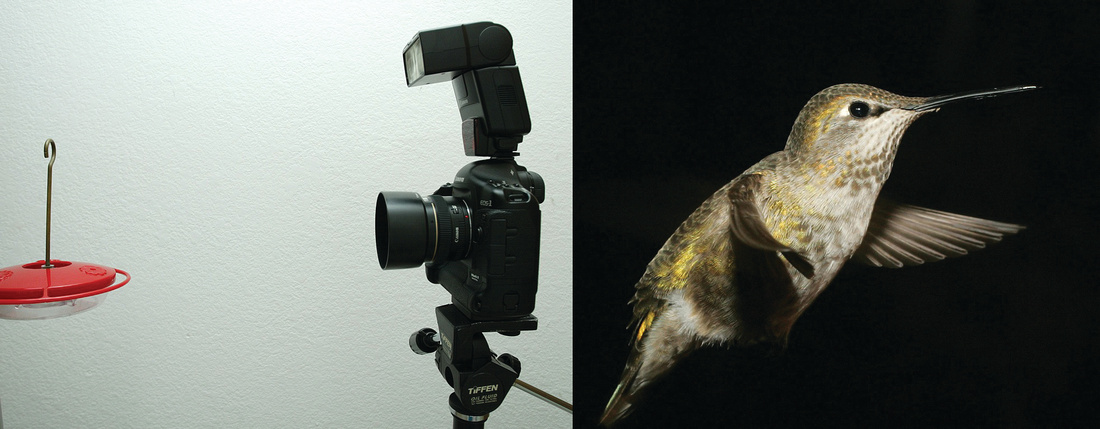Freezing Flight
Freezing Flight
Natural Light: Before you can consider freezing wing motion, there needs to be enough depth of field to even see the entire wing. Depth of field is subjective to a large extent, but a good starting point is 20mm for a 400mm lens @ f/2.8, 4 meters from the subject. And things scale from there. Depth of field will increase linearly with f#, decrease as the focal length squared, and increase with the square of the subject distance. Given that roughly five inches depth of field will cover the entire bird, for a 400mm lens, at 4 meters this requires f/16. Changing lenses will not help the situation because the depth of field gained from a shorter focal length lens will be effectively cancelled by the closer distance required for the same magnification.
For full sun, sunny f/16, this yields a shutter of 1/8000sec at ISO 8000. ISO 8000 is perfectly useable for modern digital cameras, although full direct sun is not ideal illumination. 1/8000sec is the fastest shutter available for a digital SLR. This will do a reasonable job of freezing motion at the path limits but not mid path where the wing motion is fastest. You often see photos with wings at the path limits, this is where the wing motion is slowest, and easiest to “freeze,” and where depth of field is not as critical.
Note about mirrorless camera e-shutters: Modern mirrorless cameras have can have much faster electronic shutters, but the so-called rolling shutter effect can lead to distorted images. The top of the line mirrorless cameras do a pretty good job, though. Batted and kicked balls and other fast horizontally moving objects tend to look elongated but the effect is subtle. Also, be aware that some e-shutters synchronize with flash at slower speeds, and that this can add to the ambient light that contributes to the image. The holy grail, and this would really be a game changer in digital photography, would be the global shutter in which all pixels can be accessed independently.
Freezing Flight - Flash Epiphany: Natural light will not do the trick because not matter how much light there is, or what ISO is used, there is not a fast enough shutter currently available. But a flash of shorter duration can provide the necessary exposure, as long as ambient light does not contribute significantly to the exposure (otherwise, there will be two ghost images). This could be accomplished by shady or overcast conditions, at low ISO, and at the fastest shutter speed (usually 1/250sec) at which the flash will synchronize. Basically, two exposures are occurring at the same camera settings. One from ambient at 1/250sec that contributes very little to the image, and one from a very short duration flash that occurs within the same exposure interval that provides essentially all the illumination.
By operating certain flashes at small fraction of their maximum energy, down to 1/64th or 1/128th energy, flash durations approaching 50 to 75 microseconds can be achieved. This duration will essentially freeze all animal motion. One problem with 1/64th energy, though, is that many flashes and close distances will be needed to achieve correct exposure. Typically my work included seven flashes: four main lights at 0.5m, two background lights, and a back light. All flashes at the same energy for obvious reasons.
First Result: After this flash epiphany, my initial attempt to freeze a hummingbird’s wings was very simple. A 50 mm lens shooting through the window at a feeder. I needed a very close distance because there was only a single flash attached to the camera hot shoe. I shot with both the flash and camera in manual. Low iso, high f#, and 1/64th energy dialed in for the flash. I got a harsh, shadowy image, with stopped wings in mid-path pe where they were likely moving the fastest! The background was black, with wing shadows on the body of the bird, but I loved it and I was on my way!
Photo: First result – shoe mounted flash at 1/64th energy

